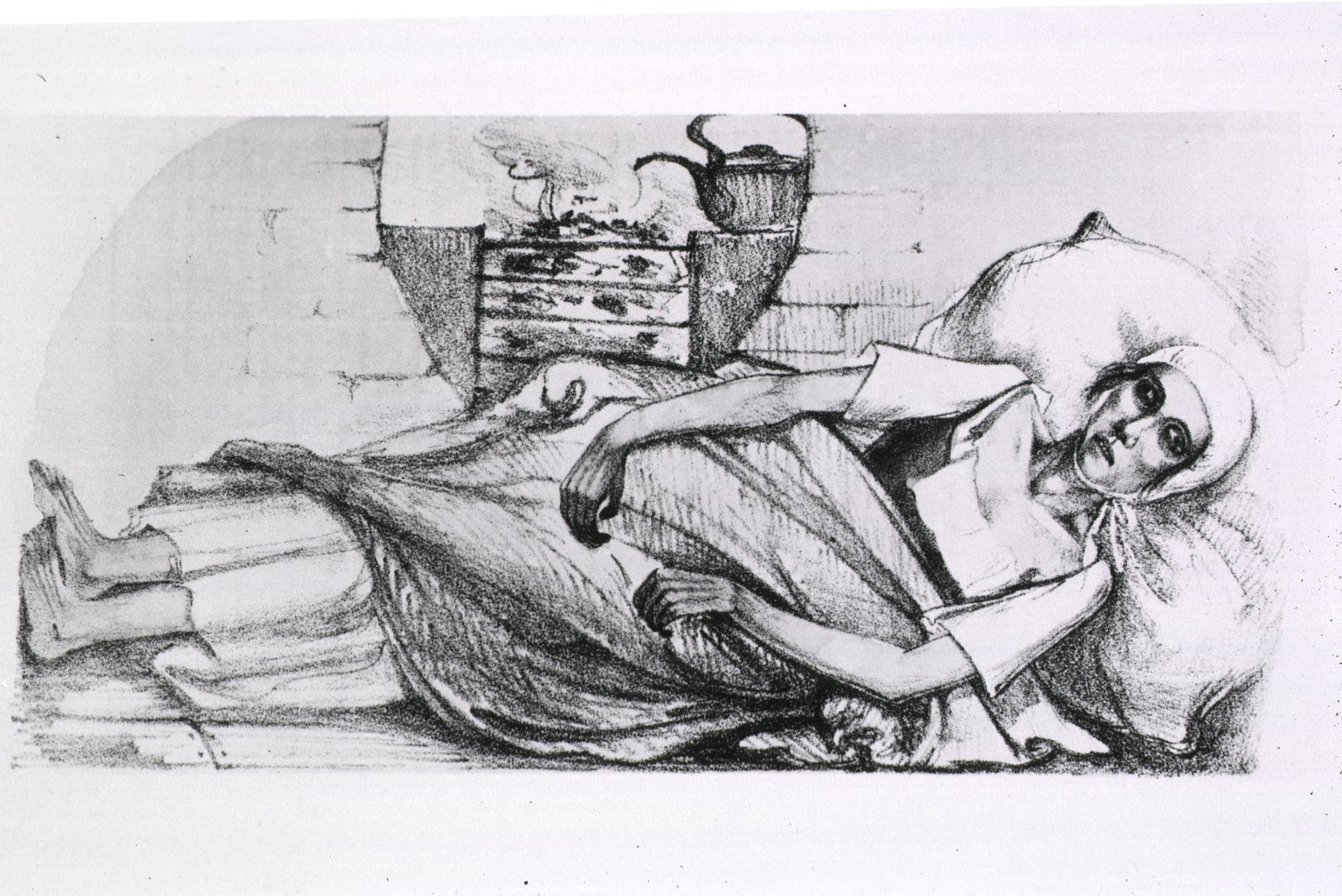Girl who died of Cholera

Annotation
This is a page from a book containing a colored lithograph (reproduced here in black and white) depicting a girl who died from cholera. The lithograph's caption, “Blue Stage of the Spasmodic Cholera. Sketch of a Girl who died of Cholera, in Sunderland, November, 1831,” coupled with the image itself provides a glimpse into both the scale and horror of the cholera pandemic that gripped the world in the 1820s and 30s. Cholera is a diarrheal disease caused by the bacterium Vibrio cholerae. The disease causes excessive water and electrolyte secretion, dehydration, and death in humans. Although originally endemic to the Ganges Delta in India, increased globalization in the nineteenth century facilitated the global spread of cholera. The interconnected world of the nineteenth century allowed cholera to spread around the world from India to places like Sunderland, a port city on the northeast coast of England, where hundreds died from the disease, including the girl depicted in this image.
Credits
U.S. National Library of Medicine. "Girl who died of cholera." Accessed July 16, 2021. http://resource.nlm.nih.gov/101434245
Found at: http://ihm.nlm.nih.gov